 Ducati Scrambler - Owner's Manual > Moving off
Ducati Scrambler - Owner's Manual > Moving off
- Disengage the clutch by squeezing the clutch lever.
- Push down the gear change lever firmly with the tip of your foot to engage first gear.
- Raise the engine revs, turn the throttle twistgrip while gradually releasing the clutch lever. The motorcycle will start moving off.
- Release the clutch lever completely and accelerate.
- To shift up, close the throttle to slow down the engine, disengage the clutch, lift the gear change lever and let go of the clutch lever.
To shift down, proceed as follows: release the twistgrip, pull the clutch lever, shortly speed up to help gears synchronize, shift down (engage next lower gear) and release the clutch.
The controls should be used correctly and with promptness. When riding uphill do not hesitate to shift down as soon as the motorcycle tends to slow down. This will avoid undue stress on the engine and motorcycle.
Attention Avoid harsh accelerations, as this may lead to misfiring and transmission snatching. The clutch lever should not be pulled longer than necessary after gear is engaged or else friction parts may overheat and wear out.
Attention Prolonged wheelies could deactivate the ABS system.
Braking
Slow down in time, shift down to engine-brake first and then brake applying both brakes. Pull the clutch lever before stopping the motorcycle, to avoid sudden engine stop.
ABS
Using the brakes correctly under adverse conditions is the hardest - and yet the most critical - skill to master for a rider. Braking is one of the most difficult and dangerous moments when riding a two-wheeled vehicle: the possibility of falling or having an accident during braking is statistically higher than at any other moment. A locked front wheel leads to loss of traction and stability, resulting in loss of control.
The Anti-lock Brake System (ABS) has been developed to enable riders to use the vehicle's braking force to the fullest during emergency braking, adverse weather conditions or when pavement is compromised.
ABS uses hydraulics and electronics to limit pressure in the brake circuit when a special sensor mounted to the wheel signals the electronic control unit that the wheel is about to lock up.
This avoids wheel lockup and preserves traction.
Pressure is raised back up immediately and the control unit keeps controlling the brake until the risk of a lockup disappears.
Normally, the rider will perceive ABS operation as a harder feel or a pulsation of the brake lever and pedal.
The front and rear brakes use separate control systems, meaning that they operate independently.
Likewise, the ABS is not an integral braking system and does not control both the front and rear brake at the same time.
If desired, the system can be deactivated from the instrument panel, using the "ABS control unit enabling/disabling" function.
Attention When ABS is disabled, the vehicle restores the standard brake system features; using the two brake controls separately reduces the motorcycle braking efficiency. Never use the brake controls harshly or suddenly as you may lock the wheels and lose control of the motorcycle. When riding in the rain or on slippery surfaces, braking will become less effective.
Always use the brakes very gently and carefully when riding under these conditions. Any sudden maneuvers may lead to loss of control. When tackling long, high-gradient downhill road tracts, shift down gears to use engine braking. Apply one brake at a time and use brakes sparingly. Keeping the brakes applied all the time would cause the friction material to overheat and reduce braking power dangerously.
Underinflated tires reduce braking efficiency, handling accuracy and stability in a bend.
Stopping the motorcycle
Reduce speed, shift down and release the throttle twistgrip.
Shift down to engage first gear and then neutral.
Apply the brakes and bring the motorcycle to a complete stop.
To switch the engine off, simply turn the key to position (2).
Important Do not leave the key to ON, position (1), with engine off in order to avoid damaging any electrical components.

See also:
 Ducati Scrambler - Owner's Manual > Running-in recommendations
Ducati Scrambler - Owner's Manual > Running-in recommendations
Maximum rpm Rotation speed for Break-in period and during standard use (rpm): Up to 600 mi (1000 km); From 600 mi (1000 km) to 1553 mi (2500 km).
 Ducati Scrambler - Owner's Manual > Parking
Ducati Scrambler - Owner's Manual > Parking
Park the stopped motorcycle on the side stand. To prevent theft, turn the handlebar fully left and turn the ignition key to position (3). If you park in a garage or other indoor area, make sure that there is proper ventilation and that the motorcycle is not near a source of heat. You may leave the parking lights on by turning the key to position (4).
 Ducati Scrambler
Ducati Scrambler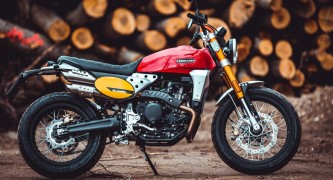 Fantic Caballero 500
Fantic Caballero 500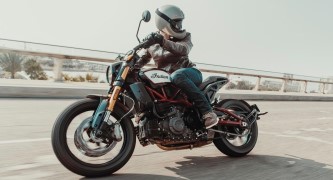 Indian FTR 1200
Indian FTR 1200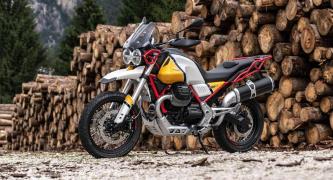 Moto Guzzi V85 TT
Moto Guzzi V85 TT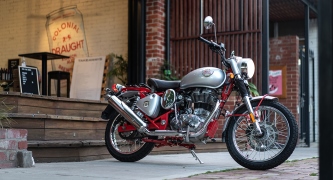 Royal Enfield Bullet Trials Works Replica
Royal Enfield Bullet Trials Works Replica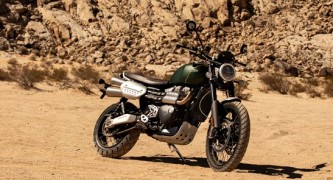 Triumph Scrambler 1200 XE
Triumph Scrambler 1200 XE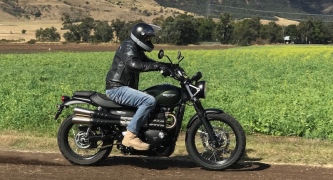 Triumph Street Scrambler
Triumph Street Scrambler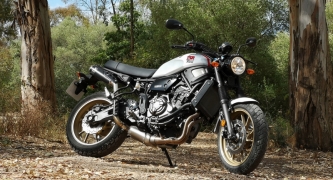 Yamaha XSR700
Yamaha XSR700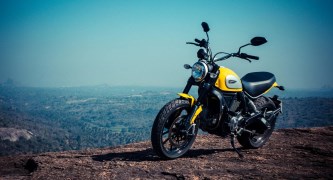 Ducati Scrambler 800
Ducati Scrambler 800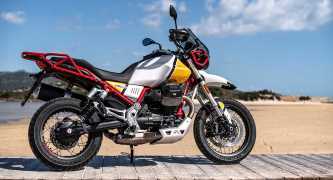 Moto Guzzi V85 TT
Moto Guzzi V85 TT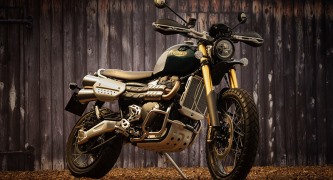 Triumph Scrambler 1200 XC
Triumph Scrambler 1200 XC